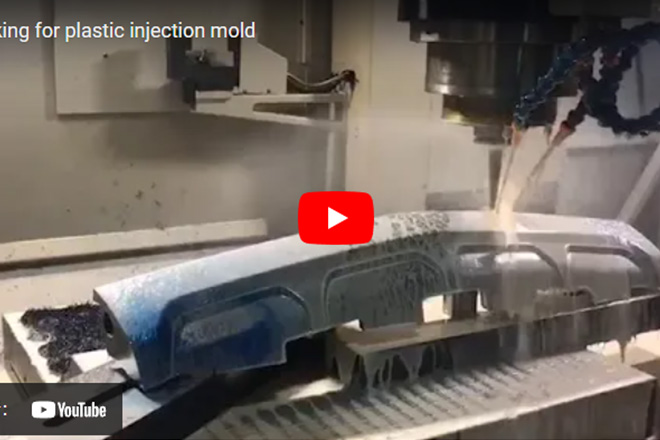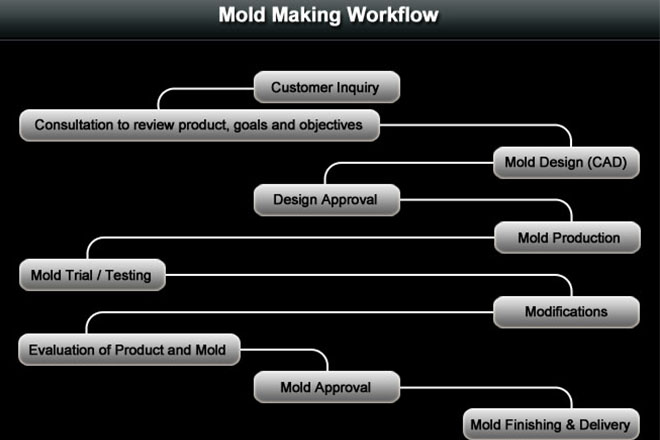A perfect part begins with Perfect mold. Premium owns a team of engineers and technician that involved in every step of the mold making process. Our injection mold combines
the skills and experience of mold makers together, we deliver the ISO-registered, documented QA and lead times you need, with highly competitive pricing, and to be your leading OEMs selection.

All the specification is strictly followed: Our molds are cut to the customer's data and specified material, including the manufacturer's specified shrink rate. The min tolerances will be +/- 0.003mm.
Our factory able to run 7 days/week to shorten the delivery time, it can be min 2 weeks.
By using imported and the top brand local made equipment , delivering 30 to 650 tons of pressure.
Different Mold Type: Mass production mold; Prototype Mold, Multi Cavity Mold, Family Mold with Multy Cavity.
Mold Material: Steel & Alumium.
Shot life: Min 1, 000 shots to save customer's cost.
Mold standard: DME / HASCO. With or without hot runner.

Premium has a very normative mold making workflow, optimization design, strict quality control to ensure that each mold can meet standards and clients' requirements. Especially on plastic mold design and plastic parts structure design stage, we take possible problems into consideration.
1. Plastic parts structure design stage: wall thickness, undercut, tolerance, mold draft, shrinkage mar deep but thin blind hole, plastic material
2. Plastic mold design stage: gate, ejection, insert, machine.
The chart below can let you have a brief understanding for which mold is suitable for your specific products, Premium focus on providing customer cost-effective and reliable solution.
Mold Material | Introduction | Advantage | Disadvantage |
Aluminum 7075 | Aluminum 7075 is the best used in low volume or medium volume projects, it is a high-strength material with a large percentage of zinc, with material involve commonly used resins, such as PP, PE, ABS, and nylon. | Aluminum 7075 ranks number one in common mold material, it can be heated and cooled very quickly. It machines well, although it may not be the cheapest material, some part of this cost can be recovered over larger production runs due to decreased cycle times. | Although aluminum 7075 ranks well on heat transfer and cost, it's still one of the least durable mold materials. Aluminum is not suitable for high clamping pressures because of the durability factor in mind, it shouldn't be used for injecting corrosive resins. |
P20 | P20 is the most widely used medium hard mold steel, good for volumes up to 50, 000 shots. It's reliable for general-purpose resins and abrasive resins with glass fibers. | P20 is more cost effective, it can sustain higher injection and clamping pressures, which are found on larger parts representing bigger shot weights. In addition, its machine is good and can be repaired via welding. | P20 has weaken resistance to chemically corrosive resins like PVC. |
NAK80 | NAK80 is similar to P20, is a medium hard mold steel for more applications. It's a good selection for high clamping pressures, high volume production and resins with glass fibers. | NAK80 is corrosion resistant and doesn't need to be stress relieved, even after 250, 000 cycles. It is a tougher and faster medium hard mold steel than P20. | NAK80 is more expensive material than P20 or Al-7075.NAK80 doesn't transfer heat as some other metals. This means potentially longer cycle times that can increase processing costs. |
S136 | S136 is a great selection for the parts take surface finish is the primary consideration, it is a high-purity stainless steel. S136 is ideal for PVC, PP, PC, PMMA and other optical-grade transparent resins. | S136 is more corrosion resistant than NAK80, it can be polished to the highest level and is the top selection when optically clear surfaces, such as polycarbonates and acrylic, are a factor in production. | S136 is the lowest thermal efficient and with highest cost compared with other materials. |
H13 | H13 is an air-hardened mold steel, it is considered a “hot-work” steel and is a good selection for high volume production orders with continuous heating and cooling cycles. | H13 is easy to machine prior to heat treatment when the metal is relatively soft and also can keep close dimensional tolerances after more than one million uses. Another advantage is that it can be polished to mirror finish for clear or optical parts. | H13 is more expensive than aluminum or P20, In addition, a little better than NAK80, H13 has average heat transference but still doesn't stand up to aluminum in the heat-transfer category. |